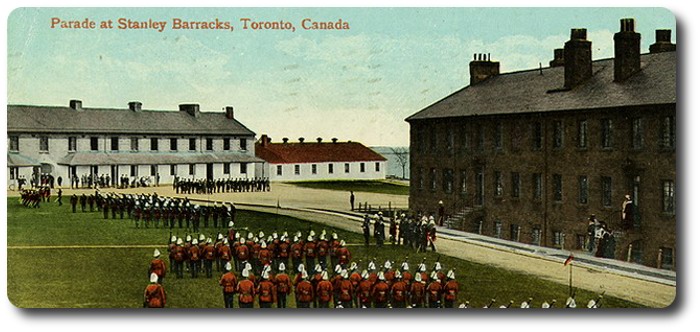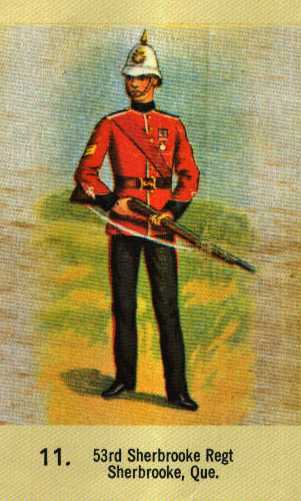The Canadian Militia (1860)
Topic: Canadian Militia

The Canadian Militia (1860)
(To the Editor of the Morning Chronicle)
The Morning Chronicle, Quebec, 6 November 1860
To His Excellency Lieut.-General Sir Fenwick Williams, Bart., Administrator of the Government
 In my former communications I proposed some change in the Active Volunteer Militia for of the Province, Which I believe will, if adopted, have the effect of rendering that force much more efficient than it is at present. The cost of maintaining the force, under the proposed arrangement (about £12,000 per annum) would be much less than under the present system. It is satisfactory to be able to state that, every brother officer of the volunteers to who I have spoken, has expressed his approval of the changes proposed in my letter.
In my former communications I proposed some change in the Active Volunteer Militia for of the Province, Which I believe will, if adopted, have the effect of rendering that force much more efficient than it is at present. The cost of maintaining the force, under the proposed arrangement (about £12,000 per annum) would be much less than under the present system. It is satisfactory to be able to state that, every brother officer of the volunteers to who I have spoken, has expressed his approval of the changes proposed in my letter.
Militia Staff
Colonel Sewell has kindly favoured me with his manuscript, which gives full details of the plan proposed by him for the formation of militia staff.
I therefore proceed to notice the leading points, as an officer of long experience who has seen some service in the army, and who had taken a warm interest in everything relating to the Canadian Militia for the last forty years, his plan deserves the careful attention of the Government, and of every Canadian who takes an interest in the welfare of the country.
The Colonel proposes that the Government should lay out certain portions of wild lands at "Militia locations" in different parts of the Province; those locations would be surveyed, and marked off into lots of 100 acres each. Volunteers would then be called for, each man receiving his 100 acres, upon which he would settle, and proceed to clear a portion of his land. The term of service for which he would engage would be 12 years, at the expiration of which the land would belong to him forever, on his paying one shilling per acre; the money so obtained by the Government to be placed to the credit of the Militia Fund.
The men would be told off in companies of 40 men each; over each company would be placed a captain of militia staff, and a lieutenant, who would receive their lots of 300 acres each, upon completing six years service, at the same rate as the men. Each location might contain a battalion, say 10 companies of 40 men each. Six of these "militia locations" in different parts of the province would thus give to us a force of 2400 bayonets. The companies would be numbered from 1 to 60, and would represent and constitute the staff of sixty battalions of the Canadian Militia. The men would be properly drilled, as hereafter described. Each company would bear the number of the battalion district to which it appertained; and, in case of threatened invasion or war, would be ordered to proceed to that district. For instance, say that the Island of Orleans was battalion district No. 26; the captain of No. 26 company militia staff would then be ordered to take his men to the Island, and to form as battalion out of the men residing on the Island who would be liable to service, appointing 24 of the most intelligent men as sergeants and the remaining 16 as captains. The staff captain would then receive the rank of lieut. colonel and take command of the battalion, the staff lieutenant becoming major.
Those 40 well drilled men in the battalion would be of great service in instructing the men in the duties of a soldier, indeed without their aid it would require a long time to bring the Battalion up to that degree of efficiency which would warrant its being brought into the presence of a hostile force.
After the men would have built their log homes, and become somewhat settled on their land, they should set to work and make good serviceable roads from the location to a turnpike road or to the nearest railway station. For this work they would be paid by the government; they would, of course, work cheaply, and this would be a first rate method of opening up the country. Intending settlers would take advantage of those good roads and in a short time the land for miles around the Militia locations would be taken up for settlement, even at an advanced rate of purchase.
Colonel Sewell proposes that the law allow the men to be ballotted for, if Volunteers not be forthcoming; but there would be no necessity for this. At the present moment there are thousands of our hardy young countrymen working in the factories of the United States; the agricultural districts of Lower Canada have furnished a large proportion of those young men, who have left their homes and country to seek a living among strangers. The number of our young men, especially farmers' sons in Lower Canada who annually emigrate to the United States, is almost incredible and the man who will show us how to check this constant flow of the bone and sinew of our country to a foreign and (at times) not very friendly neighbour, deserves something of his countrymen. The plan proposed by Colonel Sewell is admirably adapted to effect this, and if adopted will have the effect of turning thousands of acres of comparatively worthless wild lands into well cultivated districts, and enable us to retain in our midst thousands of our hardy young peasantry, the pride of our country who will otherwise, inevitably become citizens of a foreign and rival neighbouring country, and perchance hereafter bear arms against us.
Colonel Sewell proposes to divide the 12 years' service into two portions, the first of three years, the second nine years. The the first period the men shall be drilled for three hours daily during an annual period of three months. In the second period they shall be drilled daily for one month, between seed time and harvest. This amount of drill will be considered sufficient to give the men a good knowledge of the duties as soldiers. The following will show the annual cost for the maintenance of one Battalion of 400 men during the first period; the second period would be less expensive.
| 10 Staff Captains | 92 | days at | 5s | £230 3 0 |
| 273 | days at | 3s | 409 10 0 |
| 10 Lieutenants | 92 | days at | 4s | 184 0 0 |
| 273 | days at | 2s 6d | 341 5 0 |
| 20 Sergeants | 92 | days at | 2s | 184 0 0 |
| 273 | days at | 7 1/2 d | 170 12 6 |
| 20 Corporals | 92 | days at | 1s 6d | 138 0 0 |
| 273 | days at | 7 1/2 d | 170 12 6 |
| 300 Privates | 92 | days at | 1s | 1656 0 0 |
| 273 | days at | 7 1/2 d | 3071 5 0 |
| Clothing for 400 men to be renewed every 3 years at £3—£1200 or per annum | 400 0 0 |
| | £6955 5 0 |
So that, for maintaining six battalions of Militia Staff equal to 2,400 bayonets, the annual expense to the Province would be about £40,000.
If the Active Volunteer Force were reduced to the footing proposed in my former letter, there would be sufficient quantity of arms in store to arm the Militia Staff. It would perhaps be better to serve out the Enfield Rifles to only one company per battalion; the remainder might be armed with the old musket, till they are better acquainted with the use and care of arms. It would be the duty of the paid Musketry Instructors to devote a portion of their time in instructing the Militia Staff. The uniforms to be served out by the province to the Militia Staff, would be coarse, strong and serviceable; a great coat, forage cap, tunic and trousers. Cloth of our own manufacture, or étoffe de pays, would be cheap and serviceable. Colonel Sewell, in his manuscript, goes into the details of this system, but the outline which I have given will serve to enable the public to form a fair idea of the admirable plan which he has proposed for the organization of our Canadian Militia, which at present is sadly deficient in anything like organization.
| In my former communication the annual cost to be incurred for the maintenance of the Volunteer Force was estimated at about | £12,000 0 |
| Add cost of maintaining 6 battalions Militia Staff, on the plan proposed by Colonel Sewell | 40,000 0 0 |
| Expense of Adjutant General's Department, including pay of Field Officers, Storekeepers, repairs of arms, travelling expenses, &c. | 6,000 0 0 |
| Total annual cost of maintaining Canadian Militia. | £58,000 0 0 |
This amount may seem large at first sight, but when we consider the advantages which the Province would reap from this expenditure, in opening up new districts of country, the encouragement given to emigration, the retaining our young peasantry in the country, the facilities afforded for training 60,000 men in case of war or invasion, and the confidence imparted to the country at large from a knowledge of our strength, those advantages, it must be confessed, would be cheaply acquired.
We must not lose sight of the fact that there would always be at the disposal of the Government, in different parts of the country, a considerable force of well-disciplined men, whose services could be obtained at an hour's notice.
If the expenditure involved is considered too large for the present state of our finances, let a beginning be made, and the experiment tried by forming a location for only one battalion; this would involve an annual expenditure of only £7,000 (seven thousand pounds,) and a short time would show how the system worked.
The large quantity of land that we should bring under cultivation, and the revenue which the Province would derive from the adoption of this plan are well worth considering; while it will be readily admitted that every industrious farmer whom we should induce to settle in Canada, and every young habitant whom we could persuade to remain at home, would materially increase the revenue and develop the resources of the country.
| Six Battalions of 400 men each—2400 men at 100 acres per man, would give 240,000 acres, which at the end of twelve years would yield at one shilling per acre | £12,000. |
| If the lands around the Militia location were sold to Emigrants at an annual rent of one shilling per acre, we may safely conclude that double the quantity of land occupied by the Militiamen would be taken up by Emigrants. Thus 480,000 acres at one shilling per acre, would give annually £21,000, or at the end of 12 years | £388,000 |
| Total increase in 13 years | £300,000 |
| or an average of £25,000 per annum. | |
Colonel Sewell also recommends that, at the end of every three years, as the 240 men would have completed their first period, or "active service," a new quota of men should be called out to replace them. The men who had completed their first period of service would then be denominated "available service men," their cost to the province during the nine years of available service would be a mere trifle. By this means a much greater extent of country would be settled, and a larger revenue acquired.
Having thus alluded to the important subject of a properly organized Provincial Militia, a subject which, it is well known, has not failed to receive due attention from your Excellency, as well as from our esteemed Governor General, I may be allowed to express the hope that the powerful influence at your Excellency's command, will not cease to be exerted in favor of our obtaining for Canada, a system of Colonial defence which shall be consistent with our means, and commensurate with the growing requirements of this important portion of the British empire, always bearing in mind the axiom of those dark and unsettled times, "the best was to preserve peace is to be prepared for war."
An Officer of Volunteers.
Quebec, 3rd November, 1860.

Posted by regimentalrogue
at 12:01 AM EDT



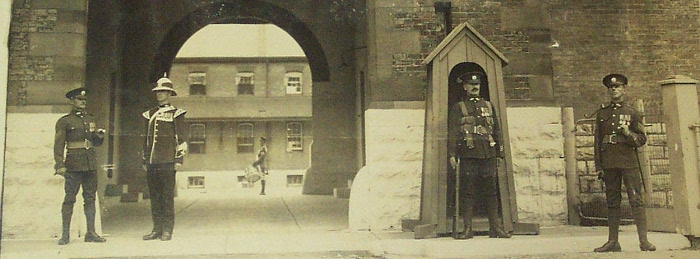


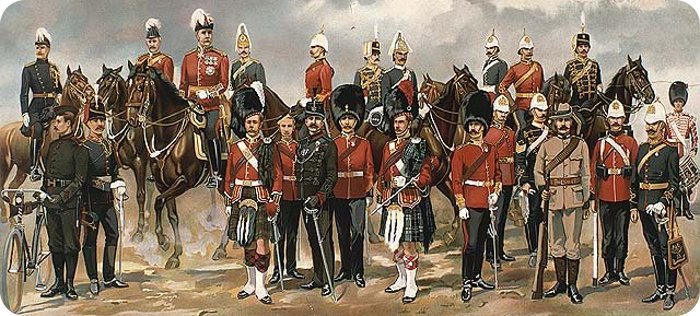

 Militia General Orders
Militia General Orders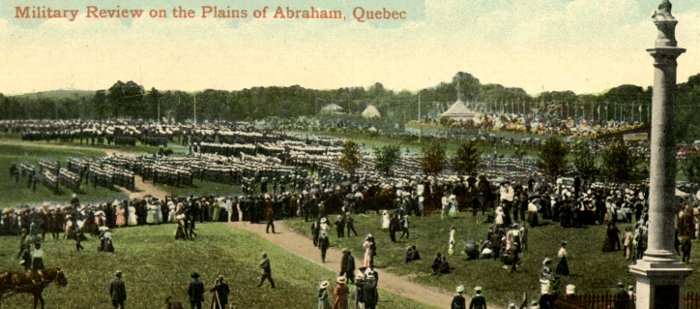
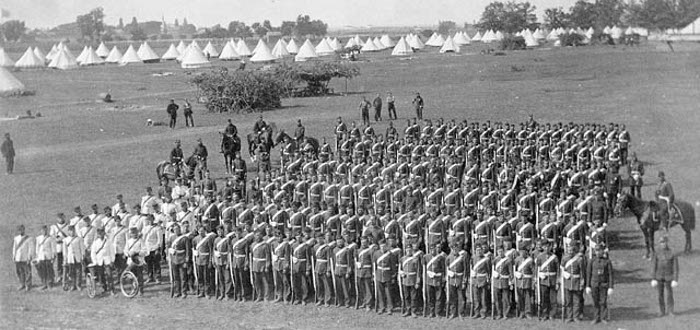
 I take the earliest opportunity to express to the officers of the general and personal staff and to the regimental officers and men of the various Corps assembled at Montreal on the 24th May, my extreme approbation of their soldierlike appearance, their steadiness under arms and the discipline so manifest throughout. They did full credit to the loyal celebration of her majesty's birthday and the honor of being permitted to pass in review before the Representative of Our Most Gracious Sovereign the Queen.
I take the earliest opportunity to express to the officers of the general and personal staff and to the regimental officers and men of the various Corps assembled at Montreal on the 24th May, my extreme approbation of their soldierlike appearance, their steadiness under arms and the discipline so manifest throughout. They did full credit to the loyal celebration of her majesty's birthday and the honor of being permitted to pass in review before the Representative of Our Most Gracious Sovereign the Queen.